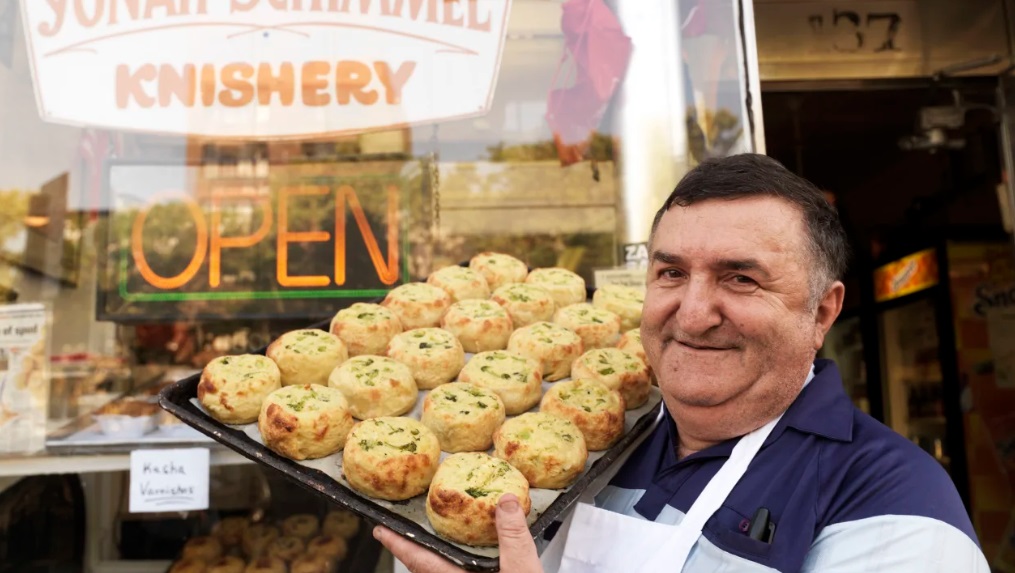Have you ever been hustling down a busy NYC street only to be stopped in your tracks by a shiny street cart perfuming the air with the alluring aroma of crispy potatoes? Tucked neatly inside the carts’ warming drawers are one of the city’s favorite snacks–knish. There are several bakeries in the city dedicated entirely to the knish, such as Yonah Schimmel’s Knish Bakery, pictured above. Some supermarkets sell frozen versions, and you can certainly order the treat from online purveyors like Goldbelly.
What Is a Knish?
A staple of Jewish cuisine, a knish (pronounced kuh-nish) is a hearty snack of cooked carbohydrates (usually mashed potatoes) wrapped in buttery dough. Knish were brought to the US by European immigrants in need of hearty and affordable meals in their new home. The first American knish were sold in bakeries throughout the Lower East Side of Manhattan, which came to be filled with these knisheries early in the 1900’s. Knish were originally sold for just $0.03 each. As Jewish immigrants moved beyond this small part of Manhattan these bakeries struggled to survive, but New York’s love for this satisfying snack remains strong over a century later. Now knish can be found in delicatessens and street carts alike, sold in a variety of fillings, shapes and styles. Whether baked or deep fried, round or square – the options for knish are infinitely delicious. The beauty of this dish is found not only in its modest price tag, but also in the fact that it can be enjoyed any time of day and either hot or cold. People may argue that knish should be eaten as an appetizer, side or snack, but all will agree that knish should be served with mustard.
Round Vs. Square Knish
While a hard rule in the sand cannot be drawn, most believe that round knish are baked and square knish are fried. No matter the shape, knish are always surprisingly heavy for their palm-sized stature. Historically, they could be held in the palm of your hand, doubling as a pocket warmer on a cold winter day.









